
Golf courses come in many different types and designs, and mastering your swings on each presents its unique set of challenges. From traditional parkland courses to Scottish link courses, each type requires a different approach to playing your best game.
We’ll explore the different types of golf courses, with a particular emphasis on link courses, and provide tips and strategies to help you perfect your swings and maximize your success. Whether you’re a seasoned golfer or just starting, mastering the unique aspects of each course type is key to becoming a skilled and successful golfer.
Types of Golf Courses
After researching and analyzing various sources, it appears that there are several ways to describe the types of golf terrains. One common description includes 8 categories: parkland, open, desert, links, mountain, seaside, executive, and heathland courses.
Parkland Golf Courses
These courses are situated on flat or gently rolling terrain and feature a well-manicured landscape of grass, trees, and water features, typically resulting in shorter holes. Examples of this type of terrain can be found in the United States and Canada.

A parkland golf course is set on a flat or gently rolling terrain, surrounded by well-manicured grass, trees, and water features. It offers a picturesque and serene environment for golfers to enjoy. The shorter holes on a parkland course often require accuracy and precision in shots, as the challenge lies in strategically navigating the tree-lined fairways. With its manicured landscape and beautiful scenery, a parkland golf course provides a classic and traditional golfing experience.
Open Golf Courses
These courses sit on flat or undulating terrain and often feature fewer trees with tall grass, natural foliage, and overgrown heather which can lead to long and difficult roughs along fairways. The UK and Ireland are popular locations to find this terrain.
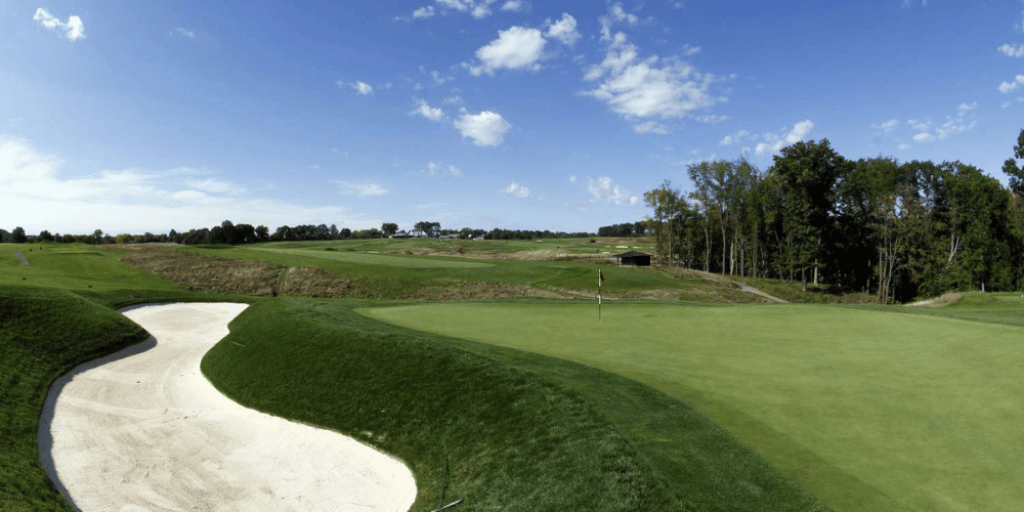
- Open golf courses feature fewer trees and shorter grass, along with natural foliage and overgrown heather, making accuracy and shot placement critical to navigate the course successfully.
- Shots need to be played low and kept under the wind on an open course to minimize side spin and control the ball’s trajectory, especially when playing on windy days.
- Open golf courses, such as those found in the UK and Ireland, have been historically designed to be natural, and the terrain provides plenty of natural hazards, such as roughs, mounds, bunkers, and hollows, which requires golfers to play creatively and strategically.
Desert Golf Courses
As the name suggests, these types of golf courses are set in arid areas and can have natural rocks, canyons, and cacti scattered throughout the course. They often put a premium on accuracy and distance to get around the natural obstacles that come with the terrain. Arizona and Las Vegas are two popular places to find this type of terrain.

A desert golf course offers a unique and challenging golfing experience in arid regions. The course design incorporates natural dunes, rock formations, and sparse vegetation, creating obstacles that demand accuracy and skillful shot-making. The barren surroundings and open landscapes require golfers to carefully navigate their shots to avoid desert hazards and stay on the fairways.
The dry climate and minimal rainfall often result in firm and fast-playing conditions, requiring players to adjust their approach and club selection. Desert courses are known for their breathtaking views and secluded atmospheres, providing an escape into nature while testing golfers’ abilities. Popular desert golf destinations include Arizona, Nevada, and Dubai.
Links Golf Courses
A links-style course is built on coastal, sandy ground with natural features such as dunes, tall grasses, and undulating fairways that can be difficult to navigate for those accustomed to a typical parkland golf course. It is a golf experience like no other, offering a unique combination of scenery, challenges, and beauty. Scotland and Ireland have some of the world’s most renowned links courses.
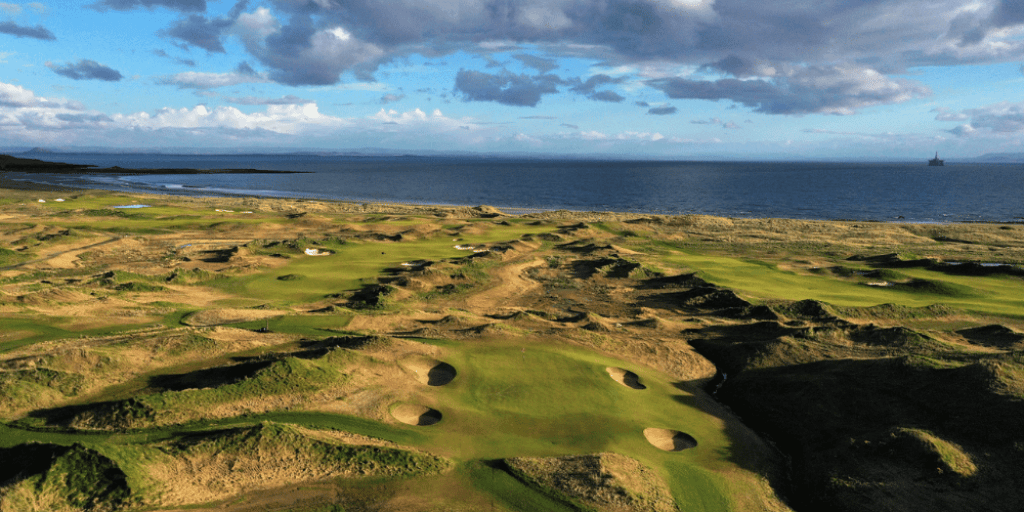
Links-style courses are known for their distinct characteristics and challenging gameplay. These courses are typically situated along coastal areas and feature open and exposed terrain. The term “links” refers to the sandy dunes that shape the landscape. A links course often has undulating fairways, deep bunkers, and no trees, providing a true test of skill and precision.
The unpredictable winds that sweep across the course further add to the challenge. Golfers must navigate strategically placed hazards and utilize creative shot-making to conquer these courses. Whether it’s the legendary St. Andrews in Scotland or other renowned types of golf courses linked worldwide, playing on these courses offers a unique golfing experience that showcases the natural beauty and raw elements of the game.
Mountain Golf Courses
This type of terrain is typically characterized by steep slopes, natural hazards, and flowing creeks or streams, making for scenic views and stunning photo opportunities. Some of the best mountain types of golf courses are set amidst beautiful mountain ranges, and their designs put a premium on accuracy and consistent ball striking. Examples include courses in Colorado and Washington State in the US.
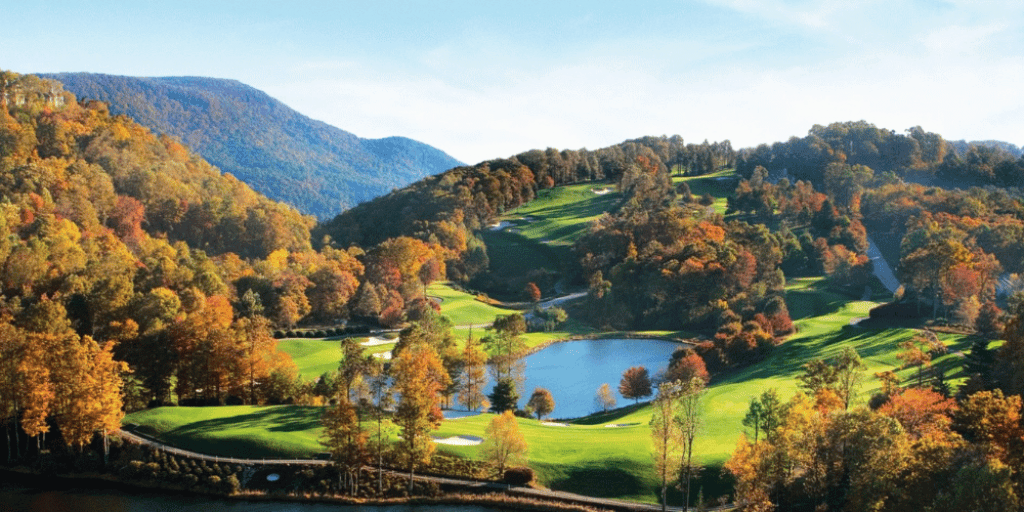
- Mountain types of golf courses are often home to prestigious golf clubs and championship courses. These courses are designed to take advantage of the natural mountainous terrain, offering spectacular views, dramatic elevation changes, and challenging hole layouts.
- Many mountain types of golf courses have hosted PGA Tour events, attracting top golfers worldwide. These events showcase the skills of professional golfers as they navigate the demanding fairways, navigate challenging hazards, and put on fast greens.
- Playing on mountain golf courses requires adaptability and strategic thinking due to the varying altitudes, uneven lies, and unpredictable weather conditions. Golfers must take into account factors such as thinner air and the potential for long drives but also should be prepared for the effects of elevation on ball flight.
Seaside Golf Courses
Seaside courses offer a unique golfing experience with coastal views, ocean winds, and the challenge of not losing your ball in the water. As you might expect, seaside courses are home to many of the world’s most iconic links courses. Some popular seaside courses can be found in destinations such as Pebble Beach, California, and St. Andrews, Scotland.
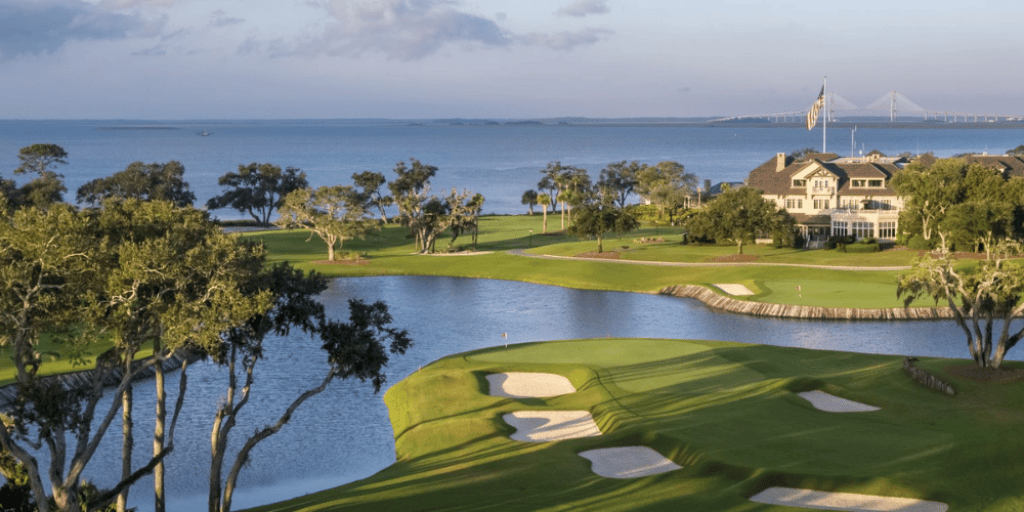
- Seaside golf courses are situated along coastlines and offer stunning ocean views. These courses provide a unique and serene golfing experience where players can enjoy the beauty of the sea while navigating the course.
- Due to the coastal location, seaside types of golf courses often have to contend with challenging wind conditions. Golfers may face unpredictable gusts, adding an additional layer of complexity to their shots. Adaptability and strategic shot-making become crucial in such conditions.
- Seaside golf courses often feature sandy dunes, natural bunkers, and undulating fairways, mimicking the rugged coastal landscape. These elements require golfers to display precision and creativity in their gameplay.
Heathland Golf Courses
Heathland types of golf courses, often located in beautiful heathland areas, offer a unique and distinctive experience for golfers. With their open landscapes, heather vegetation, and gorse bushes, these courses provide a scenic backdrop for a round of golf. The undulating fairways, strategic bunkers, and challenging roughs on heathland courses present a thrilling challenge.
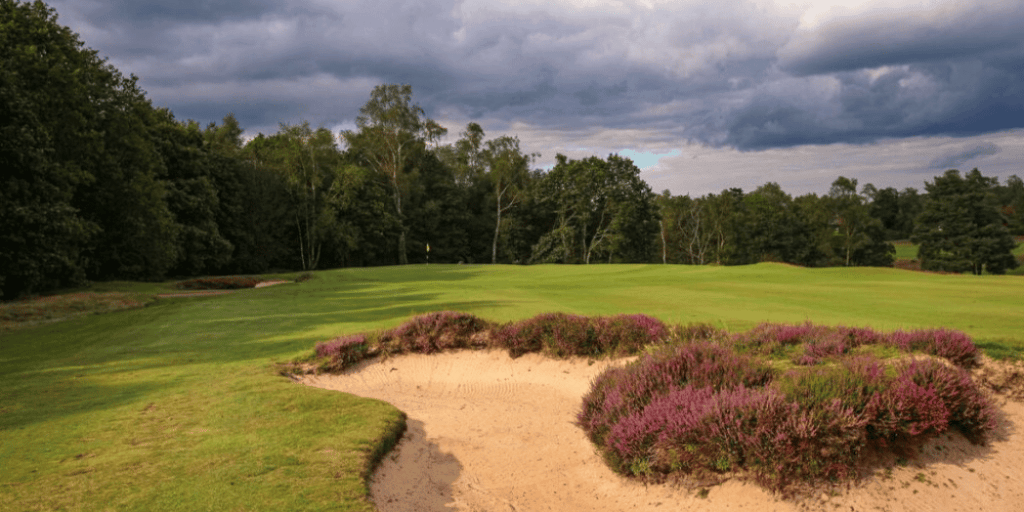
Golfers can enjoy picturesque views while facing the occasional heather hazard. Playing on a heathland course provides a refreshing and immersive golfing experience in a natural environment, making it a popular choice for golf club members and enthusiasts alike.
Executive Golf Courses
Executive types of golf courses are popular alternatives to traditional courses, offering a shorter and quicker round of golf. These courses are designed to cater to players with limited time or those looking for a more relaxed golfing experience.

Though typically smaller in size, executive courses still boast impressive features and impeccable maintenance. Some prestigious golf clubs, like Augusta Country Golf Club and Sunningdale Golf Club, also offer executive courses alongside their renowned championship courses.
Playing on an executive golf course allows golfers to enjoy a leisurely round while still experiencing the exceptional facilities and high standards associated with these esteemed clubs.





